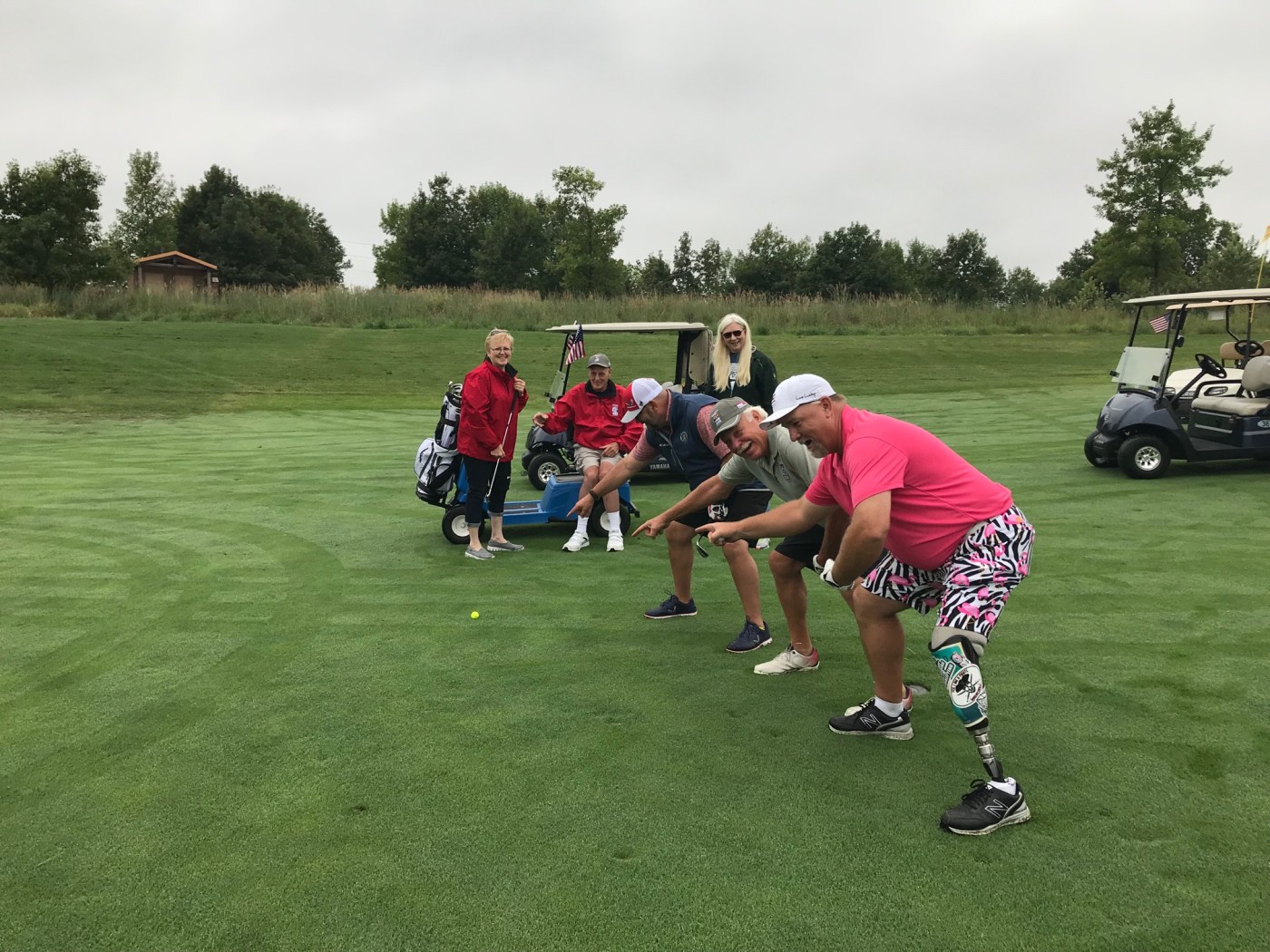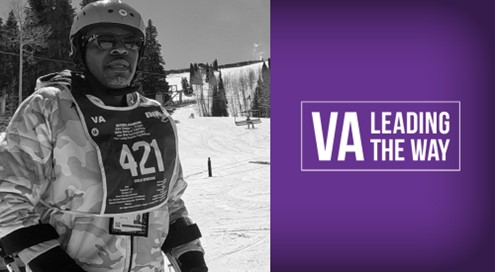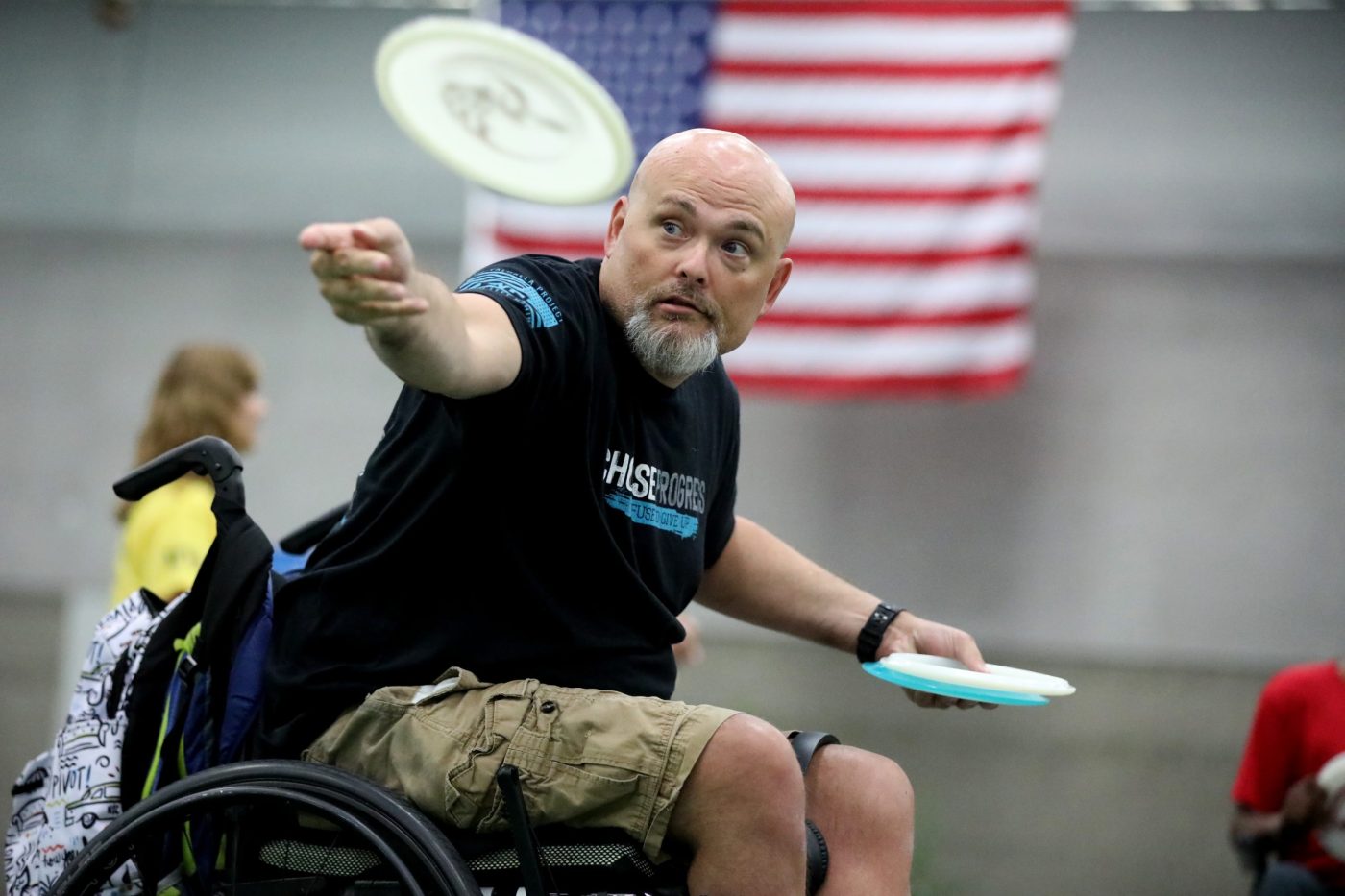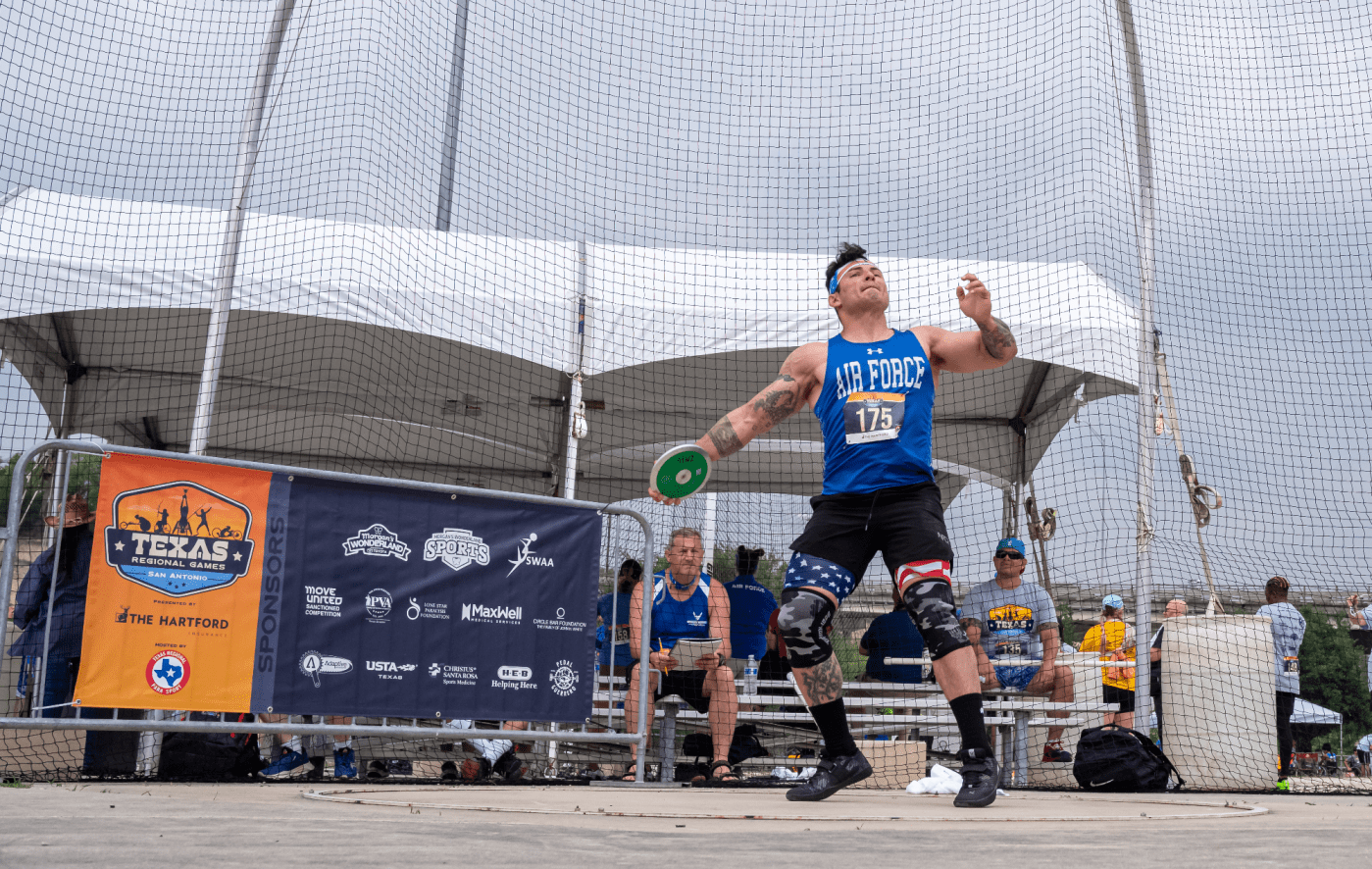
Chris Paulsen swings for the greens at the TEE Tournament. Despite losing his leg at 23, he golfs, bowls, hikes and stays active throughout several sports.
Chris Paulsen would probably rather not know how much a U.S. Navy EA-6B Prowler weighs, but it’s something you don’t forget after it rolls over your foot.
The aircraft comes in at 33,360 pounds. Paulsen was on the flight deck of the USS Constellation in January 1998, checking to see if a missile was secure, when the aircraft launched from the catapult, running over his heel, crushing and displacing about 85 percent of the bones in his foot.
“My first thought was, “Oh, my God, what have I done?’
My second thought was, “Get this plane off my foot!”
There were some other colorful words in that quote. You’ll have to use your imagination.
Paulsen, 23, was air-evacuated to an international hospital in Bahrain, Saudi Arabia, but despite antibiotics, gangrene set in and his left leg was amputated just below the knee.
He tried and was denied a chance to stay in the Navy, so Paulsen went back to school for a business degree, a job and relearning how to do the sports he loved before the injury.
Paulsen, who gets his care at the Northern California VA Medical Center and is at this year’s National Disabled Veterans TEE Tournament where he’ll golf as much as he can and bowl standing up. He’s the only amputee to bowl at the National Military Bowling Championship in Las Vegas, and he’s started the first-of-its-kind, all-Veteran golf league in northern California.
“The first time I tried getting back to bowling, I slid on my left leg and fell down. I figured, ‘That’s it. I’m never doing it again.’ But a friend told me to come out for a league. She didn’t care if I just stood at the line and threw the ball.”
— Chris Paulsen, on how he got back into sports after losing his leg in a Navy accident
“I remember the psychologist coming in to talk to me in the hospital and she asked me how I felt about the leg, and I told her I really didn’t know how to feel, but I wasn’t going to let it hold me back. I told her, ‘I’m not the Swamp Thing. It won’t grow back, so I have to deal with it, and that’s what I’ve been doing.
“I golf, I bowl, I climb, I hike, I fish, I dance. I live life.”
Paulsen wore shorts early on and didn’t mind showing off the prosthetic leg, even if people stared.
“After awhile, I wrote a message on the leg, ‘If you’re looking at it, please smile.’ Now I have one with an American flag on it, another one with a Navy logo and one with Lake Tahoe scenery. I go to my daughter’s school every year on Veterans Day and talk about Veterans.”
His bowling and golf scores are better than most people with two legs.
“The first time I tried getting back to bowling, I slid on my left leg and fell down. I figured, ‘That’s it. I’m never doing it again.’ But a friend told me to come out for a league. She didn’t care if I just stood at the line and threw the ball.
“I started that league with a 142 average and ended with a 172.”
Eventually he taught himself to slide on his right foot like a leftie bowler. And when he got that first 300 game, “I just fell to my knees and cried.”
Helping others
Now Paulsen has taken it a step further, trying to get more Veterans playing golf. His VA already has a recreational league and partners with PGA HOPE, which teaches golf to help Veterans deal with post-traumatic stress and other issues.
“But once you learn, there was nowhere else to go,” Paulsen said. “I went to the Northern California Golf Association and told them, ‘You do things for kids, you do things for women and all these other groups. Now we’re building a league for Veterans to play in tournaments and go places.”
His buddy, Army Veteran Paul Oetinger, said Paulsen is making a difference for other Veterans.
“One of the biggest things with post-traumatic stress is it causes you to isolate yourself. Most Vets don’t want to talk about their injuries. They don’t want a handout or people feeling sorry for them. But it can be tough. You see someone like Chris, and that just encourages you to get out there and try.”
Butch Whitehead, DAV national commander, said Paulsen exemplifies the rehabilitation goals of the TEE Tournament.
“Chris is a perfect example for other Veterans what this even is all about — getting out and continuing with life in spite of injury. The fact that he started a golf league back home is amazing, and I hope he can give me a few pointers on my game.”
Paulsen said he’s more than willing.
“My best advice for someone who is down on his luck or thinks he can’t do it, I say, ‘BS, you can.’ You should not let a disability stop you from what you love to do. I love bowling, and I love golf. Even if I’m an amputee, it doesn’t stop me.”
Topics in this story
More Stories
Army Veteran John Wade participated in the 38th annual National Disabled Veterans Winter Sports Clinic, continuing to live his life to the fullest.
Veterans and volunteers interested in registering online for the 43rd National Veterans Wheelchair Games (NVWG) can do so now through April 5, 2024.
Last year, Move United hosted 26 adaptive sports competitions in 22 states for 1,537 individual athletes. This year, that number is increasing to 35 events in 24 states for even more Veteran athletes.






